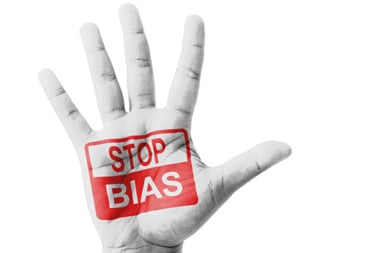Why you must confront and defeat your own bias

You need to beat your lazy brain and think slowly to make better decisions, says Caitlin Mackesy Davies
You’ve had diversity training, you’re open-minded and up to date, so you treat everyone the same, right? As a matter of fact, it’s pretty much a certainty that you are regularly treating somebody, somewhere different from somebody else. Because of their race, gender, sexuality – any number of things that make them different from, or similar to, you. And you aren’t even aware that you are doing it.
It’s all because of your brain, which makes split-second, instinctive decisions about the world you live in and how you should behave. Our brains have two strategies – or systems – for making decisions and assessing the environment, explains Dan Robertson, diversity and inclusion director of Employers Network for Equality & Inclusion.
System one does its thinking fast, and works at an unconscious level. It’s useful because it quickly processes the enormous amount of information we encounter every day. But in making rapid judgements it also takes shortcuts – based on our experiences, culture, emotions and instincts – that can lead to stereotyping and inadvertent, hidden, bias. System two is all about concentration, attention and effort (the kind of thinking we use to fill out a tax return), and our mind doesn’t really like to do it, which is why it is so easy (and common) to default to system one.
Due to system one, we form what Robertson calls “preferred people preferences” that affect our unconscious social preferences.
We may demonstrate this type of bias, he says, in “micro-behaviours”.
For example, we may exhibit an affinity bias, where we respond positively to people who are similar to us or with whom we have something in common. We might give that person more airtime in a meeting, or agree more often with what they say. In contrast, we might cut short those with whom we do not have an affinity, or disregard their viewpoints. These are subtle behaviours, and very different from what we think of as discriminatory behaviour, which is overt and conscious.
The bad news is that we can’t eliminate these biases altogether. They are hard-wired into us. The good news is that our knowledge of them is based on science and evidence, which can make them a firm avenue by which to engage with inclusion in the workplace. Best of all, by being aware of them, and looking for trends and patterns, we can change the way we work to limit the behind-the-scenes damage they can do.
How to beat your bias
1. Get rid of groupthink
While there’s a value to a cohesive culture and tight-knit team, there’s also a danger that where people share similar backgrounds and values they can fall victim to “groupthink” and make decisions that aren’t questioned. Be aware of the potential for the members of a group with similar backgrounds to reinforce each other’s thinking and potentially narrow the organisation’s outlook.
2. Go deeper with diversity
“There are many organisations with workforces that have a mix of ethnicity, sexuality, disability, but often those groups are at the lower end of the organisation,” says Robertson. Bias testing can help create true inclusivity, for instance by identifying patterns of exclusion throughout the employment cycle.
3. Strike back at stress
When you are under pressure, fast thinking is more likely to operate – and you are more likely to rely on your instincts. Creating an organisation where people have the opportunity to talk about decisions and time to consider actions could lead to less biased decisions.
4. Hide the hints
The recruitment process is a place where unconscious bias manifests itself. Actions that take it out of the equation can make a difference. For instance, removing candidates’ biographical information – such as their hobbies and education – and focusing instead on competency-based information is one way to remove opportunities for bias.

Press & Media Enquiries
For more information or to request interviews, contact CMI's Press Team on 020 7421 2705 or email press.office@managers.org.uk


